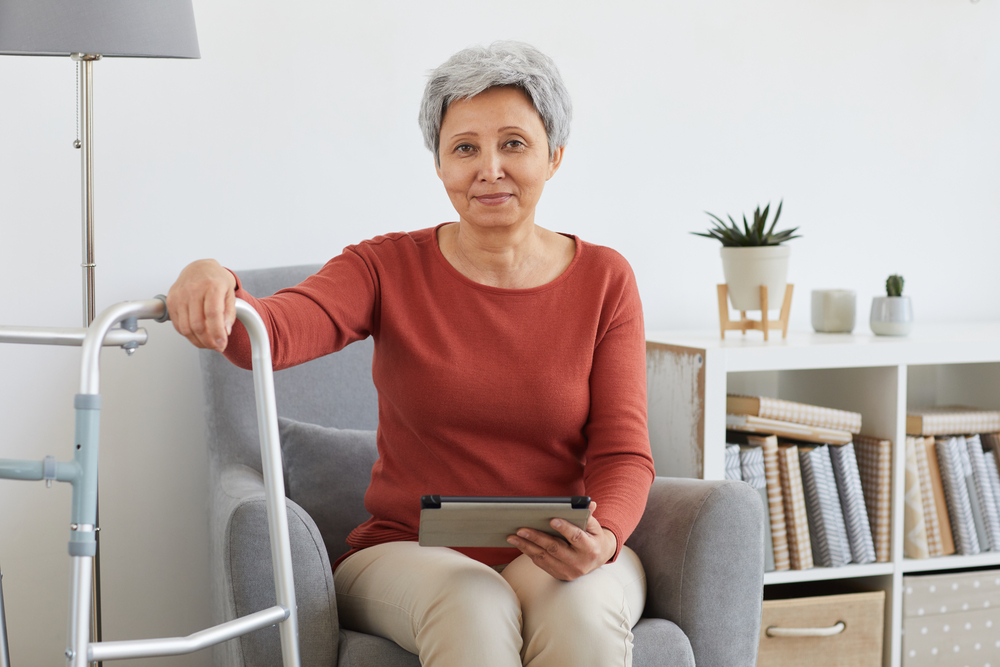

We may earn revenue from the products available on this page and participate in affiliate programs. Learn More ›
Many adults prefer to remain in their homes as they age. After all, it’s comfortable, familiar, and—well, it’s home. As people age, however, and mobility and response time slows down a bit, minor safety hazards around the house can become more significant. For the elderly (and their concerned relatives), taking a few basic home safety measures can go a long way toward making home a safe and comfortable place to live.
Before You Begin…
Senior safety hazards come in many forms. Falls, fires, and tasks or situations that require swift movement and reflexes may be problems for elderly home living. While every senior will have different challenges and concerns, there are some precautions that are universal, such as making sure that surfaces are level and nonslip, grab bars are in place where they’re needed, and the ability to call for help is easily accessible and nearby. First, perform a home safety assessment. Walk around the home (yours or your family member’s). Look at the places where you stop and put your hand out on the wall, where you catch the toe of your shoe, and where water might drip or puddle and cause a slippery spot. Look to see where the phones are and where the address book with important phone numbers is kept. Identify dark spots or places where there’s not enough space to comfortably turn around or open drawers, and check for places where there’s not enough room to lift heavy items from a shelf. If you’re not confident that you’ll see what needs to be done, the National Association of Home Builders provides training to contractors who are Certified Aging-in-Place Specialists (CAPS) and can help you identify potential problems and solutions. Then you can get to work.
Protect your home and family with a top-notch security system. Vivint’s professionally installed systems don’t just alert you to threats—they help both prevent and deter them. See Vivint’s cameras and services.
STEP 1: Eliminate the risk of falls around the home.
Falls can happen in any home to anyone, not just elderly people. However, older people are more likely to suffer fractures and injuries when they fall, and they’re more likely to be living alone without immediate assistance available. As a result, the first step in making sure a home is safe for elderly living is eliminating as many likely fall hazards as possible.
First, you’ll need to identify places where slips are likely. Throw rugs are an unexpected hazard: While they’re pretty and may add a bit of a cushion during a fall, they’re also flexible and not stable, so catching a toe under the edge of the rug can lead to a fall. Taping them to the floor or carpeting can reduce this hazard without sacrificing style. Thresholds and stairways are also likely locations for falls; making sure there are secure handrails and adding textured no-slip strips or safety steps with treads can help. Another potential hazard? Small (or large) pets who tend to get underfoot are particularly dangerous in a home with elderly residents. Tripping over a beloved pet will often cause a person to fall in an awkward way as they try not to injure the pet, potentially injuring themselves far more seriously. Crating or gating pets in a less central part of the home when elderly or older adults are present can provide the pet with a comfortable, secure home base and protect your visitors as well.
Placing a telephone handset in each room is also a good plan, so that in the event of an emergency a phone is always close at hand and fully charged.
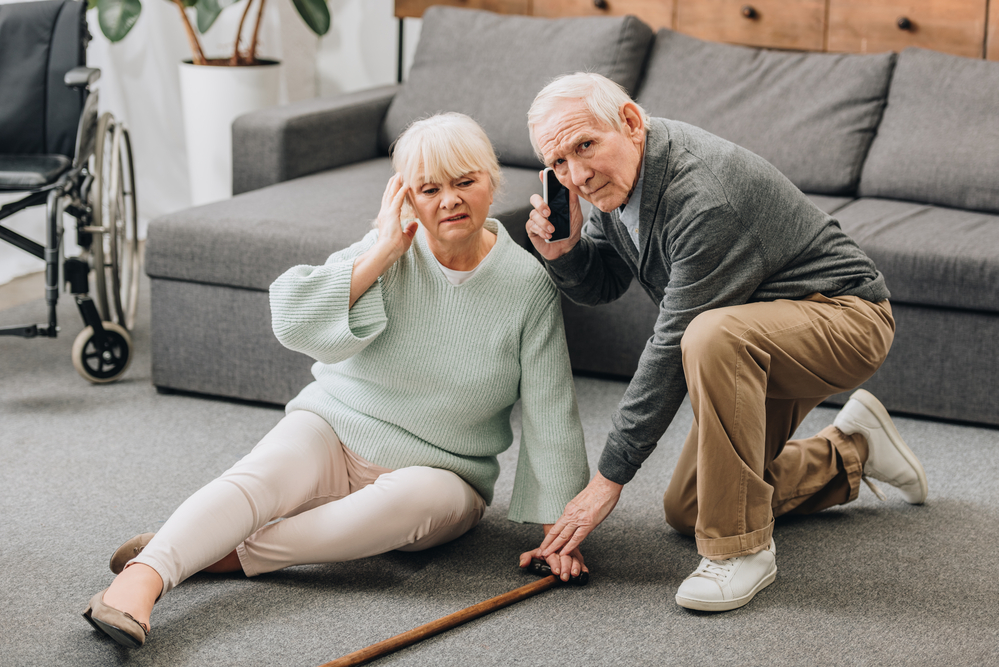
Need a home security system? SimpliSafe can help. With a comprehensive whole-house solution, you can be prepared for the unexpected. View SimpliSafe systems and prices.
STEP 2: Keep a list of emergency numbers visible and accessible.
In an emergency, details can fly out of your head. Many of us now keep all of our important phone numbers in our phones, making it even less likely that we’ll remember them in a moment of crisis. For a senior who is injured or in danger, scrambling to find an address book or a misplaced cell phone will only increase the hazard, so posting a list of critical numbers in a visible spot—or more than one spot—can mean that help can be on the way sooner. 911 is simple to remember, but the list should also include the Poison Control number (1-800-222-1222) in case of a medication mixup or accidental ingestion, the numbers of family members and friends or neighbors to call in an emergency, and the number for health care providers.
One caveat: This list should be visible and easily accessible from inside, but not posted where it can be read through a window from outside. Criminals could use the phone numbers and names of friends and family members for fraudulent purposes.
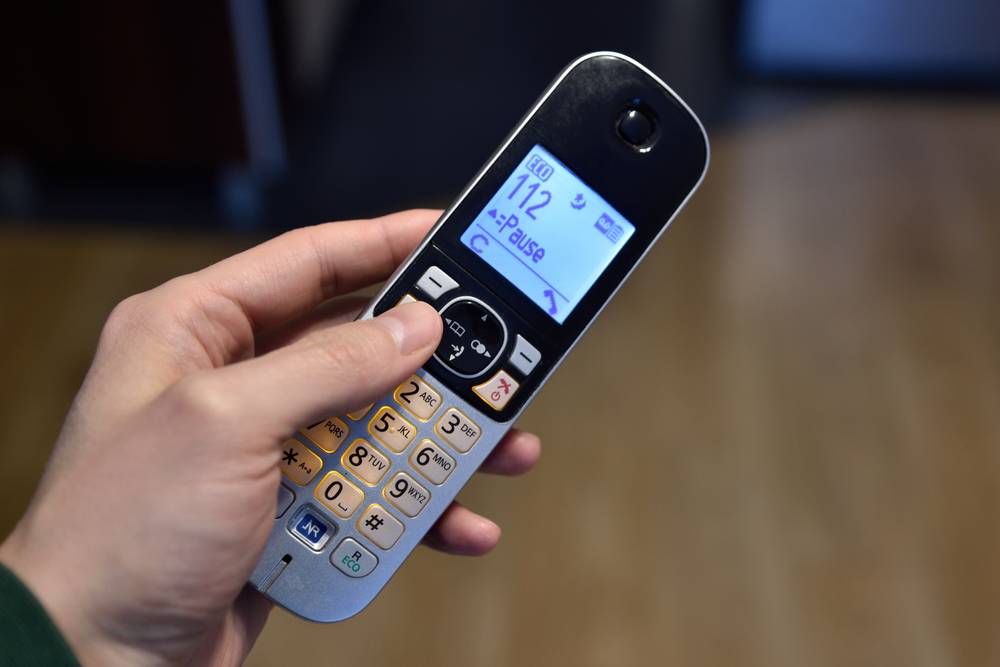
Frontpoint protects your home in an emergency, whether it’s a break-in, fire, medical emergency, and more. View Frontpoint products.
STEP 3: Remove fire hazards from the home.
In case of a fire, an elderly person might not be able to react as quickly or move as swiftly as is necessary to get out of the home, so it’s important to reduce the chances of a fire taking hold in the first place and stock the home with warning devices. The first layer of defense is a collection of smoke detectors, located in the kitchen, bedrooms, and near appliances. The batteries should be changed twice a year; many people choose to change them when Daylight Saving Time begins and ends. Test them regularly and respond promptly when they sound. Adding a fire extinguisher to the kitchen and on each floor of the home is also a good idea, but especially for the elderly, the best thing to do in a fire is to exit the home promptly and then call 911.
Other fire home safety tips have to do with prevention. Check all appliances for frayed cords and functioning emergency shutoffs, and consider having an electrician come in to assess the condition of electrical outlets and service. Then make sure extension cords aren’t strung together and outlets aren’t overfilled to avoid electrical shorts and overheating.
The last element of fire safety is the resident’s habits and practices. Avoid wearing loose clothing when cooking, lest it catch on a flame. Avoid smoking in bed or leaving candles unattended, and be sure that any space heaters are at least 3 feet away from soft furnishings to avoid accidental blazes.
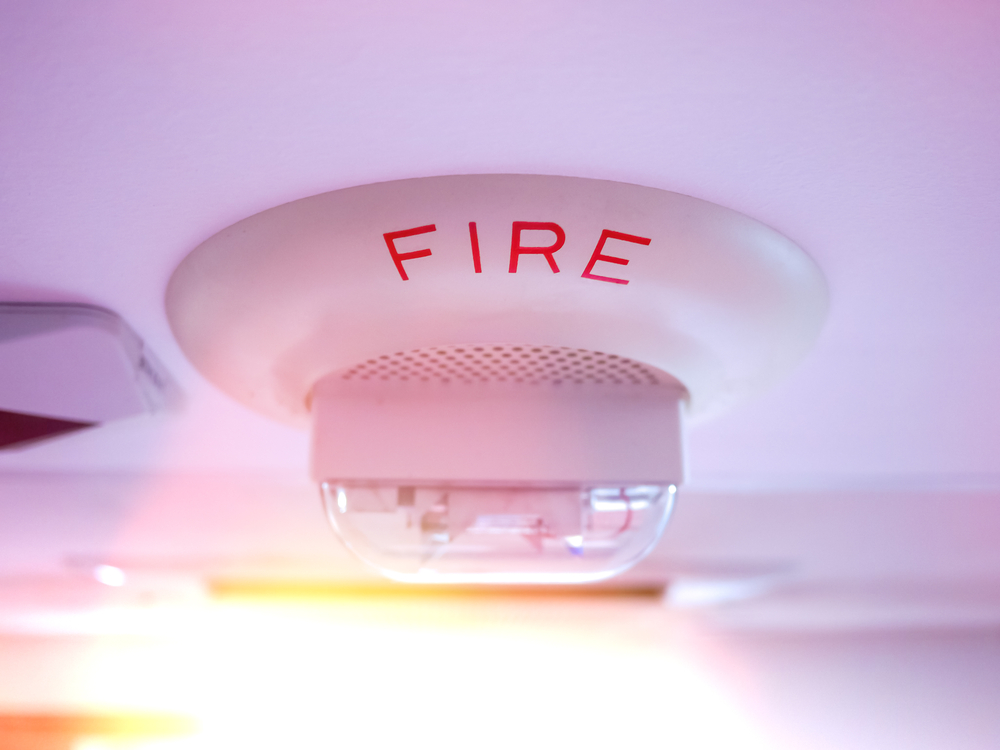
Deep Sentinel Home Security systems can make you and your family feel safe and secure with top-of-the-line equipment and live guards watching your home. View Deep Sentinel Home Security systems and prices.
STEP 4: Pay special attention to safety concerns in the bathroom and the kitchen areas.
First, it’s worth checking the water’s temperature, which should be at or below 120 degrees to ensure that if the hot water is turned on without mixing with cold, it won’t result in a scald or burn.
Bathrooms and kitchens have two things in common: hard floors and water. These make for a dangerous combination. There’s a certain risk regardless of what safety measures are put in place, but a few steps can help reduce the chances of injury. Bathtubs, showers, and bathroom floors should have nonslip or textured surfaces that keep floors from getting slick when they’re wet. This can be accomplished by installing no-slip strips to the floor and adding grab bars to the walls of the tub or shower to provide a secure handhold when stepping out of the shower. And if the resident is having trouble getting in or out of the tub or maintaining balance in the tub, consider adding a shower seat so that showers can be a pleasant chance to relax instead of fraught with concern over a fall. Equally important is ensuring that bath mats have non-skid rubber backing so they don’t slide across the floor when they’re stepped upon. If falls are a particular concern, consider adding adhesive padding to corners or sharp edges.
Depending on the situation, replacing the toilet with a taller model that reduces the leg strength necessary to sit and stand can be very helpful, along with adding a sturdy grab bar alongside. Decorative grab bars are available that are disguised as towel bars, so there’s no need for an industrial-grade bar that announces its presence to visitors.
Kitchens present several challenges. Nonslip flooring is ideal, but if replacing all the flooring isn’t possible, using nonslip rubber mats in front of the sink and stove will help, especially if they’re flat and not trip hazards themselves. If the elderly person is in a wheelchair, consider installing a range with controls located on the front edge instead of the back so there’s no need to reach across hot burners to adjust the temperature.
Cabinets and storage are another concern. Especially if the cabinets run to the ceiling, look for options to retrofit them so that there’s plenty of available storage space that doesn’t require a step stool or stepladder to access. Pullout shelves installed in existing lower cabinets can reduce the need to bend and reach into deep recesses and make cooking and cleanup easier and more comfortable.
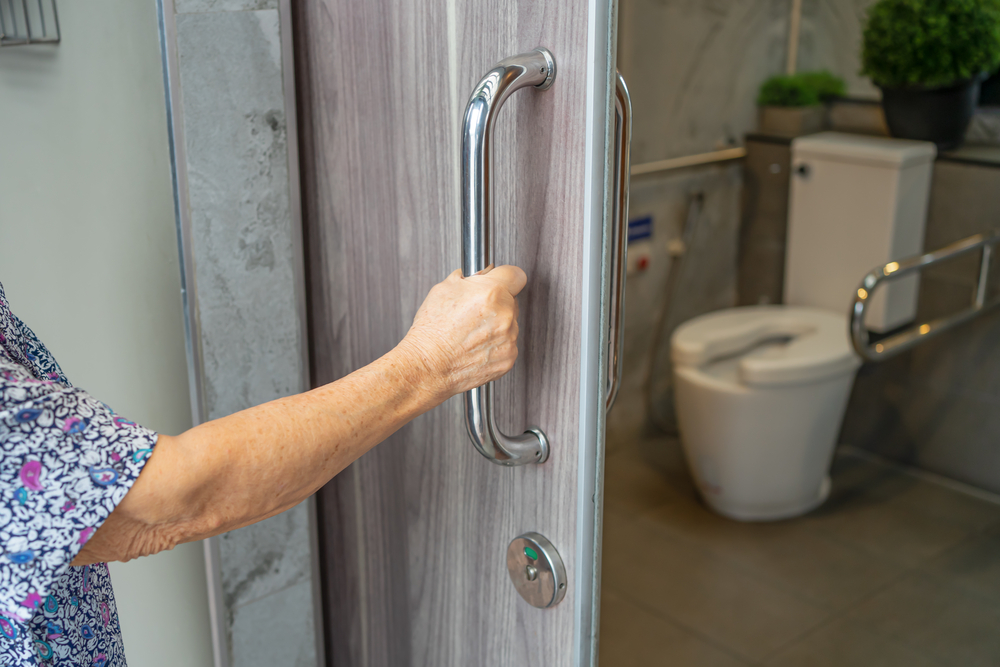
STEP 5: Assess the bedroom for potential hazards.
Bedrooms tend to collect furniture and clutter, which is not ideal for older adults trying to navigate at night. Adding some low lighting is a great first step to making the bedroom safer, as is purging the room of unnecessary objects and adding easy-to-access storage.
Protect your home and family with a top-notch security system. Vivint’s professionally installed systems don’t just alert you to threats—they help both prevent and deter them. See Vivint’s cameras and services.
STEP 6: Check all sources of light.
Good lighting makes a home feel warm and welcoming, but it also adds an element of safety. Well-lit hallways are easier to navigate, rooms with balanced lighting make hazards easier to see and avoid or correct, and bathrooms and kitchens with clean, bright light make showers safer and cooking a pleasure. Ideally, include a combination of general overhead and task lighting. General lighting can be connected to a motion sensor so that it comes on automatically, avoiding the need to fumble around in the dark for a lamp or a switch. It might be a good idea to upgrade the light switches in the home; rocker switches can update the look of your fixtures as well as increase the ease of use. Task lighting over the sink and chopping areas, hobby tables, workbenches, and laundry are wise investments and can take the form of hardwired fixtures or easily installed plug-ins or strip lights tucked under cabinets. Don’t forget the closets: Bright lighting in a closet, whether it’s plug-in, installed, or battery powered, makes finding clothes quick and easy and avoids the problem of digging around in the dark to find a favorite sweater.
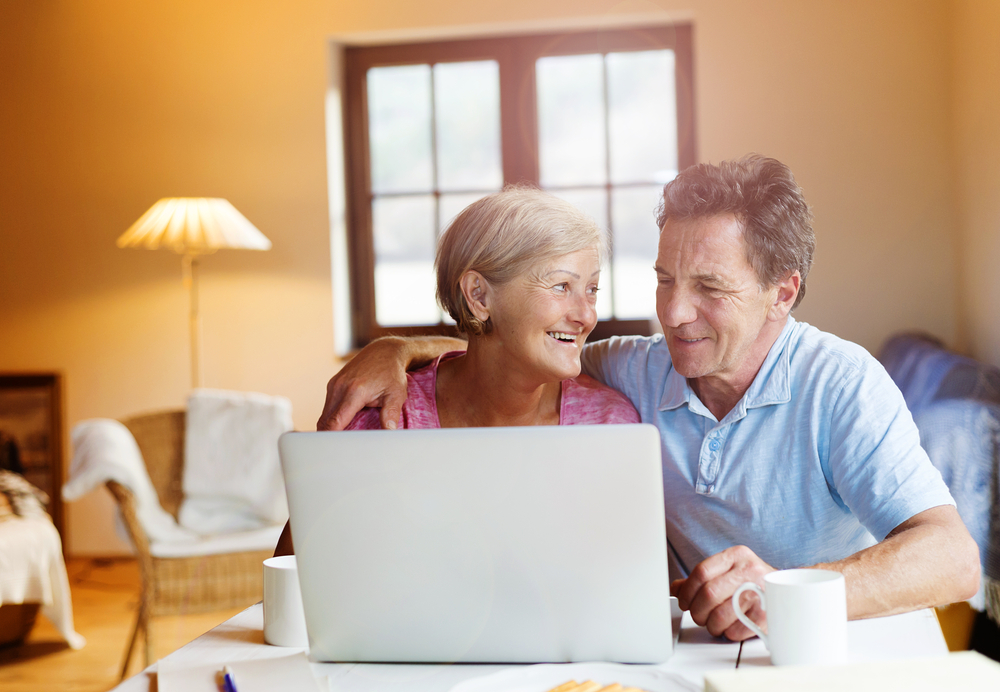
Exterior lighting matters, too! Consider floodlights that are outfitted with motion sensors, so residents returning home unexpectedly late can find their way to the door, and make sure there’s adequate lighting to make unlocking the door a quick and easy task.
Once the lighting is in place, consider the kind of bulbs that are installed. Halogen bulbs can get very hot and present a fire danger. Incandescent bulbs don’t get as hot as halogen but will need to be replaced frequently. LED bulbs last for considerably longer than incandescent bulbs and will save on energy costs as well.
Consider moving light fixtures that are at the top of the stairs: This is not a safe place to get up on a ladder to replace a bulb, whether you’re 25 or 95.
Need a home security system? SimpliSafe can help. With a comprehensive whole-house solution, you can be prepared for the unexpected. View SimpliSafe systems and prices.
STEP 7: Make the stairs easier—and safer—to use.
A staircase clear of clutter with well-tacked-down carpeting and a sturdy railing—ideally on both sides—will allow elderly residents of a home to access upstairs and downstairs with as little risk as possible. Good lighting is also critical here: dim or dusky reflected light can make depth perception difficult.
If necessary, consider installing a stair lift for the resident if they are no longer able to use stairs safely.
STEP 8: Invest in a smart home security system.
Investing in one of the best home security systems can make any home safer, but in the case of an elderly resident, they provide additional benefits. A smart-home security system allows for control over lighting and door locks, making it easy for the resident to check that everything is locked and turned off without descending the stairs again before bed. Doorbell cameras that connect to devices allow seniors to check to see who is at the door before opening it, or choose not to open it if they don’t recognize the visitor. And connected voice-activated assistants offer residents the ability to call for help (to dial a phone to reach a family member or friend, call an ambulance or the police, or summon a family member who is elsewhere in the house) if a phone isn’t immediately available. Adding door and window sensors or outdoor cameras to the system can provide outstanding peace of mind to older adults whose hearing may be deteriorating, because they can trust that the monitored system will alert them (and the authorities) if a break-in is in progress.
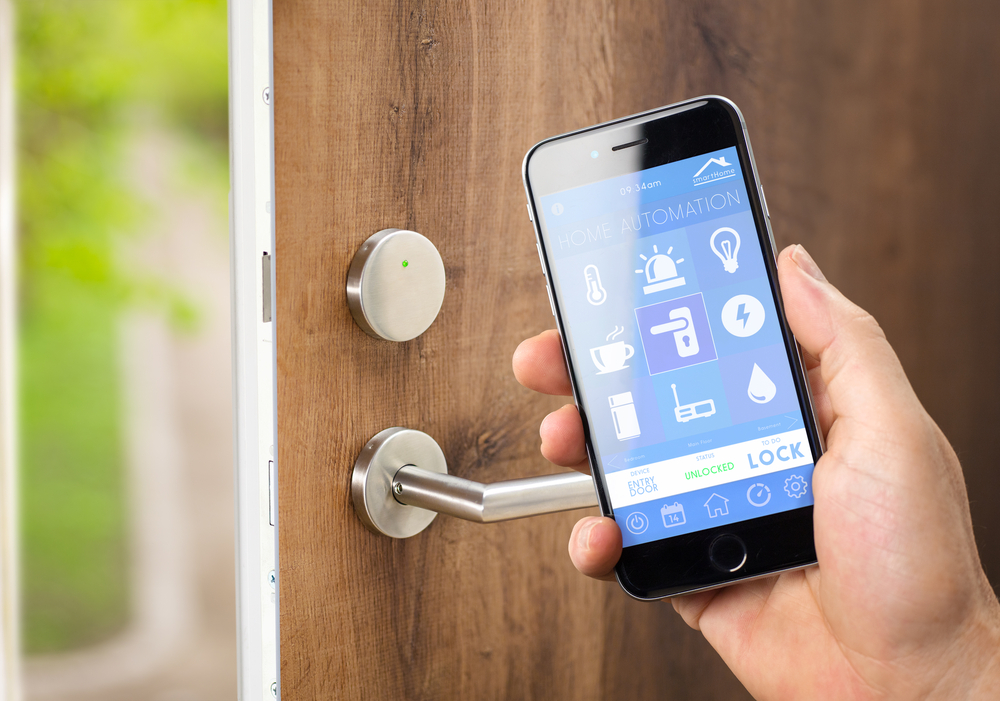
Beyond the standard security system, some monitored security companies provide a medical emergency response component to their system. Offered as a pendant on a lanyard or a watch-type device, the system allows a person who has fallen, can’t get out of bed or a bathtub, or otherwise needs emergency assistance to summon help with the press of a button that is already on their person, rather than struggling to find a phone and call. These services can maintain a medical history as part of their records to notify emergency response personnel of medical conditions or specific instructions, and they can notify family members of the emergency. These options provide an extra layer of comfort and security for both the older adult who wishes to remain at home and family members who worry that something will go wrong when they aren’t there.
Making the decision to age at home rather than in an assisted living community feels comfortable for many older adults, but once that decision is made, it makes sense to take the appropriate steps to make that home as safe and comfortable as possible before it’s necessary. Making minor changes and small renovations can allow older adults to remain safely in their own homes.
